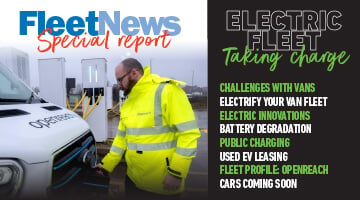Risk management: Can it be safe to cut risk management spending?
by Saul Jeavons, director, Transafe Network
 In the current economic climate, any sensible organisation should be looking to control unnecessary costs.
In the current economic climate, any sensible organisation should be looking to control unnecessary costs.
In a recent Fleet News online poll, 29% of respondents said that they were “coming under pressure to cut spending on risk management”.
It might be road safety heresy to suggest it, but for some organisations, cutting risk management expenditure might actually be a prudent measure.
A lot of money is spent on measures which give only marginal improvement.
However, for many organisations it would make more sense to leave things as they are, and for many more addressing unnecessary costs might actually mean increasing the amount of attention paid to risk management.
Until one knows the true costs to the business of its road safety issues – from bent metal and higher insurance premiums to the less obvious staff downtime, management time, reputational damage – it is impossible to work out if you are spending more than you need to or, alternatively, not enough.
Few firms have actually calculated a financial value to each of these elements, yet many seem prepared to consider cutting costs in this area without working out whether they can actually afford to do so.
There may be an “invest to save” business case for doing more risk management rather than less – or it may make sense to cut back. You’ll know only by costing out the pros and cons of each.
And the trick once you have worked out the business case is to work out what to invest in.
Vehicle development: Carmakers' need to tinker is just astonishing
by Adam Tyler, chief executive, NACFB
 In the course of our work at the National Association of Commercial Finance Brokers, we frequently travel across the UK.
In the course of our work at the National Association of Commercial Finance Brokers, we frequently travel across the UK.
One of the simplest ways of getting from A to B with all our equipment is to hire a car.
So far, so simple.
But I’m afraid I fail to understand the need for vehicle manufacturers to change the design and the whereabouts of the fundamental controls on the latest models – and we’re not talking windscreen wipers here. Which makes every new car experience a challenge.
The need to tinker with things which have worked perfectly well for decades astonishes me.
Last time I hired a car to take the team and some exhibition stands to Earl’s Court, it took me nearly 10 minutes to get the thing started as I struggled to remember the right combination of card in, press brake, push start button.
And don’t get me started about the handbrake.
Why was it disguised as a cupholder?
Thank goodness that at no point had we been driving down the motorway while I’d been looking for somewhere to put my coffee…
My colleague drives an old Seat Ibiza. It operates a very clever system.
The security (both opening doors and starting the engine) is operated by a device called a ‘key’.
It works brilliantly.
And the handbrake is cunningly disguised as a handbrake.
Seat might not have had much in the way of imagination 10 years ago – but it has never yet sent a team of people sailing through the front windscreen in the hunt for a cupholder.
Green fleets: Low-emission vehicles need to prove themselves
by Steve Hucklesby, managing director, Paragon Group
 Everyone has a role to play in achieving green fleets.
Everyone has a role to play in achieving green fleets.
Lord Mandelson’s loan to the automotive industry, which came with attached conditions of investment in green technology, is a clear sign of Government policy to come.
Changes designed to lower emissions are well meaning, but concerns about what the future will hold for these vehicles and how they are managed at end of life must be addressed.
Once low-emission vehicle (LEV) fleets are proven to be a cost-effective, realistic business option for fleet managers, these vehicles could increase their presence in the sector.
However, to maintain traditional petrol and diesel fleet vehicles, there is a clear process with an established supply chain, which is not yet established for LEVs.
To combat this, affordability and practicality are the keys. It is vital that captive fleet management and defleeting companies receive support to offer the same scaleable, high-quality service, which is currently in place for petrol and diesel vehicles.
The supply chain also needs to have support to invest in training and embrace emerging technologies so that these vehicles can be effectively managed on behalf of fleet owners.
Training in these areas will also enable the UK fleet industry to ensure it can become a global leader in the management of LEVs and emerging fuel sources.
Once this infrastructure and training is in place, it will help to give fleet managers the confidence to know that LEVs can be maintained cost effectively and ultimately remarketed after their operational lives.
















Login to comment
Comments
No comments have been made yet.